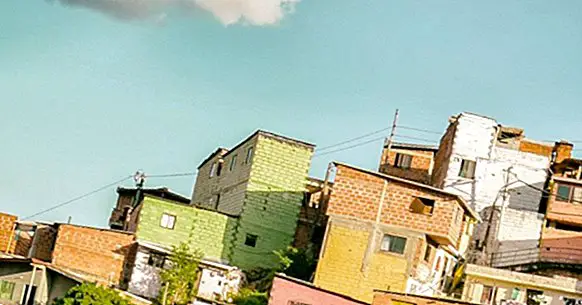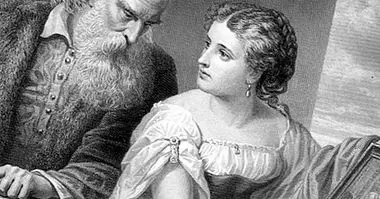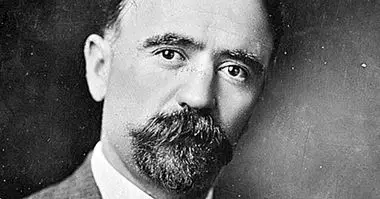10 Colombian legends full of folklore and popular culture
Colombian legends with decades of history they mix the mystic with the historical, the love with the lovelessness, the magic with the tradition, the heroic and the supernatural. These are narrations rich in symbolic and historical content that, in addition to entertaining us, can help us to know individual experiences, historical events and cultural worldviews.
In the following article we will see 10 of the most popular legends of Colombia, in which It shows a part of popular culture and the mythology of the South American country .
- Related article: "10 short Mexican legends based on folklore"
The 10 most popular Colombian legends
The legends are narrations that are transmitted orally or written generation after generation. Likewise, they are a way to understand popular ideas and everyday life: they tell stories about the past, explain natural or supernatural phenomena, talk about individual events, romantic relationships, religious, educational, political, heroic events, and so on.
Each legend is typical of the specific region where it is counted, so it is transmitted and transformed according to the cultural codes of the same. Returning to the above, we reviewed 10 popular legends of Colombia.
1. The mother of water
They say that in Colombian rivers and springs it appears the ghost of a beautiful woman, whom they know as the Mother of Water, or the Mother of Rio . They say that her hair is golden, her skin white and her eyes green and big. By day, and in the sight of the sun, its power is spiritual and healing.
At night, his face reflects fantasy. Attracts and seduces young people who, in eye contact, fall into a state of hypnosis and madness. Some more fall into the depths of the spring and are never seen again. To get out of the spell, young people who survive must pray accompanied by adults. It is also told that the Mother of Water stroll through the crystal clear lakes on dolphins, fish and crocodiles .
2. The patasola
Similar to the stories of other legendary women in Latin America, such as La Llorona or La Sayona, "La patasola" is the soul in pain of a woman who lost her children due to love conflicts. It is known as "the patasola" because it walks with only one foot. His hair is long and matted, and he has big eyes and mouth.
They say that she was a woman who was married to a peasant with whom she had three children. One day, on his return from work, the farmer finds the woman at home with her employer, and in a fit of fury cut the head of the latter with a machete. The woman tried to escape, but the peasant managed to cut off one of her legs. As a result of this injury the woman died soon. The farmer set fire to the house and took his children far away. Since then, the soul in pain of the patasola returns to look for them .
According to the specific region where it is counted, the patasola appears with enormous fangs, so it can be a kind of vampire that, beyond being a woman scorned, is a being that protects nature.
- Maybe you're interested: "The 10 best Spanish legends (ancient and current)"
3. The limelight
According to this legend, there is a large burning ball composed of three torches, which take the form of red tentacles and chases men suspected or ill-will, such as drunks, infidels, abusers, those who leave their families, and so on. They say that also chases out-of-date travelers and may appear to reprimand bad behaviors of children and grandchildren .
The origin of the limelight is an old woman who was excessively permissive with her grandchildren. When she died, San Pedro rebuked her for having educated them in this way and, as punishment, gave her the form of three flames of candle, as well as the task of returning to put order when necessary. One represented the body of the old woman, and the other two that of her grandchildren.
4. The wounded mule
Bogota residents say that from midnight you can hear the galloping of a mule . Herrada because she goes alone and saddled through the city. It is said that a man named Don Alvaro, enjoyed riding his mule constantly changing course. He always ended up in a gambling house, where he ate and drank until late at night. One day, while Don Alvaro was playing, his servant accompanied the mule to drink water from the river. The animal escaped to the gambling house where its owner was.
Surprised, Don Alvaro asked him to pick it up every night, and it happened. When Don Alvaro died, the mule spent the rest of his nights roaming the city in search of its owner. They say that her fasta returns to this day, so that those who hear her call her "the wounded mule".
5. The witches of Burgama
In the town of Burgama, today called San Juan Crisóstomos de la Loma, the legend of María Antonia Mandona, María Pérez, María de Mora, María del Carmen and Leonelda Hernández, who were accused of witchcraft and subjected to an inquisitorial process in the XVII century. They were known as Las Brujas de Burgama and lived on a hill near the town, where they were dedicated to cure the sick and in love .
However, they were accused of having pacts with the devil, as well as of wanting to turn the locality into a large lagoon to make the parish priest an alligator, and of the inhabitants a set of toads. They were finally taken to prison and sentenced to the stake. But one of them, Leonelda, managed to escape with the help of the indigenous people. On the whole, not only did they release the accused, but they also killed the soldiers and the captain who had ordered their sentence. From this moment, the place was known as Cerro de la Horca.
6. The Mohan
Legend has it that in the Colombian mountains and crags there is a great man with abundant hair, beard, large eyes and long nails. According to the specific region where it is counted, man may have different characteristics and origins . For example, it is said that he is a sorcerer who, in anticipating the arrival of the Spaniards in the fifteenth century, took refuge in the caves, where he played the guitar especially at full moon.
In fact, many of the natural disasters in the area are attributed to him, which is why some people pay him tribute as a sign of peace. In addition, the Mohán constantly returned to the city, it is said that he persecuted young people and peasants, so it is frightening for some people.
7. The alligator man
Legend has it that a fisherman named Saul Montenegro had an obsession with looking at women who bathed naked on the Caribbean coast, specifically on the Magdalena River. He did not want to be discovered and reprimanded, so he decided to visit a sorcerer in the area, who prepared a potion that would turn him into an alligator. That way he could hide under the river and continue spying on women. The same sorcerer gave him an extra potion, which would allow him to return to the human state when the fisherman wanted . But obviously someone else would have to spray it last while it was in the shape of an alligator.
He asked the favor of one of his friends, who, surprised by the transformation, spilled the potion only on the head of the fisherman. Thus, he became a half-man, half-alligator, and immediately aroused the terror of the women who visited the river. They did not return, and in desolation, the fisherman spent the rest of his days roaming the river until he reached its mouth. Until now, fishermen who visit the area expect to meet the alligator man.
8. The muelona
Also known as the Colmillona, it is a woman with long hair and large eyes with a huge denture. They say it comes from a woman called La Maga, who was dedicated to divining the future, freeing women and punishing men. When dying, the neighbors said to listen to her inside her house swearing revenge towards infidel, drunken and vicious men .
Some people claim that their spirit appears on the edges of the trails, especially when the afternoon falls. At first she looks like a seductive and attractive woman, so many men approach her quickly. However, they are terrified when it shows their great teeth (similar to a horse) and, sometimes, even crushed as a form of punishment.
9. The Sombrerón
This legend, which has its own versions in Mexico and Central America, says that the Sombrerón is a tall and corpulent man, with an almost diabolical face, who persecutes and punishes young people with inadequate habits. For example, those who abuse alcohol or drugs, those who steal or mistreat, and so on.
In colombia it is a man dressed in black who wears a big black hat . His hair is long, smooth and of the same color and, in life, he was seen wandering along the edges of the street. After death, many people claim to continue to meet in solitary places, or, walking the streets when there is a full moon. In some regions they also call him The Black Rider. Surprise and chase young night owls at high speed, always shouting "If I catch you I'll put it on."
10. The goblin
This legend has different versions depending on the place where it is counted. It is usually an angel who was expelled from sleep with the punishment of walking through the fields of the earth. It has the ability to persuade young people and adults and provoke nightmares, sleepwalking, provoke anger, lose their things, and lead them to wander aimlessly. Especially when it comes to peasants and young people in love.
Other versions tell that the goblin that is dedicated to kidnapping boys and girls with blond hair, to take them to the forest and turn them into wild beings.



















